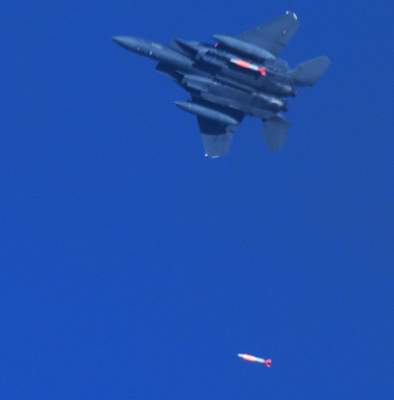The Pentagon is spending about $11 billion on a life-extension program for the B61 bomb, which is one of most ambitious and expensive nuclear warhead refurbishment in history. Cost estimates have doubled from $4 billion to $8 billion and production slipped from 2017 to 2020, then grew to $10 billion for life extension plus $1 billion for tail guidance kits and production was delayed to 2021
The B61 Mod 12 is to replace the previous Mod 3, 4, 7, and 10 versions with 400–500 planned with a service life of 20 years. Refurbishing the existing variants and eliminating the guidance kit would save $2–3 billion.
Congressman John Garamendi has suggested that the B61 simply be retired and the B83 nuclear bomb be used instead. The B83 thermonuclear weapon is a variable-yield gravity bomb developed by the United States in the late 1970s, entering service in 1983. With a maximum yield of 1.2 megatonnes of TNT (5.0 PJ) (75 times the yield of the atomic bomb “Little Boy” dropped on Hiroshima on 6 August 1945, which had a yield of 16 kilotonnes of TNT (67 TJ)), it is the most powerful nuclear free-fall weapon in the United States arsenal.
The Air Force says that upgrading the B61 would be “considerably” less expensive than integrating the B83 to additional aircraft.
The B61-12 nuclear bomb upgrade should have enhanced accuracy and a lower yield with less fallout compared to previous versions of the weapon.
The B61-11 nuclear earth-penetrator is accurate to 110–170 meters from the desired detonation location, so it requires a 400-kiloton warhead. The B61-12 is accurate to 30 meters from a target and only requires a 50-kiloton warhead. Schwartz believes that greater accuracy would both improve the weapon and create a different target set it can be useful against. An example is the higher-yield B61-11’s role of attacking underground bunkers that need a ground burst to create a crater and destroy it through the shockwave. A 50-kiloton yield detonating on the ground produces a crater with a radius of 30–68 meters, depending on the density of the surface, effectively putting the bunker within the circular error probability.
“This demonstration of effective end-to-end system performance under representative delivery conditions marks another 2015 achievement in the development of the B61-12 Life Extension Program,” said NNSA Deputy Administrator Madelyn Creedon. “Completing this guided B61-12 flight test provides additional evidence of the nation’s continued commitment to our nation’s security and that of our allies and partners.”
The flight test asset consisted of hardware designed by Sandia National and Los Alamos National Laboratories, manufactured by the National Security Enterprise Plants, and mated to the tail-kit assembly section, designed by The Boeing Company under contract with Air Force Nuclear Weapons Center. This development flight test asset contained representative non-nuclear components but no highly enriched uranium or plutonium, consistent with test treaty obligations. Although the tail-kit assembly guided the test unit, the B61-12 nuclear weapon will have no additional capabilities from the legacy B61 nuclear weapons and is not GPS-guided.
This test is the last of three development flight tests for the B61-12 Life Extension Program (LEP). An F-15E from Nellis AFB released the B61-12 test asset and it demonstrated successful performance in a realistic guided flight environment. Initial indications are that all scheduled activities occurred successfully and that telemetry, tracking and video data were properly collected. This test provides additional confidence in the weapon system and instrumentation designs prior to authorizing Phase 6.4, Production Engineering, in 2016.

Brian Wang is a Futurist Thought Leader and a popular Science blogger with 1 million readers per month. His blog Nextbigfuture.com is ranked #1 Science News Blog. It covers many disruptive technology and trends including Space, Robotics, Artificial Intelligence, Medicine, Anti-aging Biotechnology, and Nanotechnology.
Known for identifying cutting edge technologies, he is currently a Co-Founder of a startup and fundraiser for high potential early-stage companies. He is the Head of Research for Allocations for deep technology investments and an Angel Investor at Space Angels.
A frequent speaker at corporations, he has been a TEDx speaker, a Singularity University speaker and guest at numerous interviews for radio and podcasts. He is open to public speaking and advising engagements.





Comments are closed.